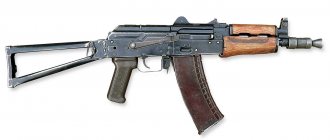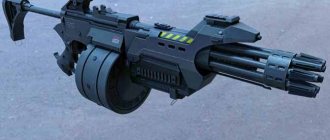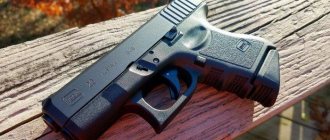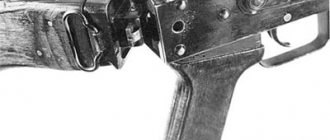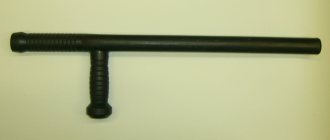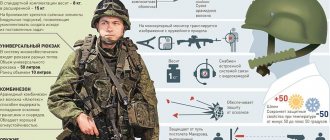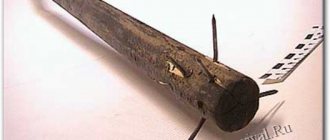The battles that marked the period of the Crusades were extremely bloody and more than cruel. The problem of cruelty was aggravated by the virtual absence of medicine, as well as the lack of sanitation methods, as well as undeveloped tactics. When it comes to the Middle Ages, we mean knights and crusades...
The weapons used in the battles of the Crusades were almost as hellish as any military tool then available.
Think about it—it’s no wonder that the expression “going back to the Middle Ages” still strikes some people with fear.
The warriors of the Crusades, during the 200 years from late 1000 to mid 1200, were a mixed bag of peasants, mercenary soldiers, and knights, and their weapon combinations reflected the ways in which each could wield his own weapon.
Peasants often had simple weapons - mainly tools used in agriculture (usually axes and clubs, as well as some derivatives based on them) - since they could not afford the luxury of a sword. Knights had more expensive swords as well as armor, while other knights used bows and arrows and spears.
So what were the deadliest weapons found during the Crusades during the Middle Ages?
Mace or club
A mace is a type of club with a spherical structure at the top. When it comes to length, it ranges between two or three feet (60 to 91 cm). The handle was made of wood, while the spherical pommel was usually made of iron.
The pommel could be smooth and round, or have flanges. Although the mace was an infantry weapon, it was used by some cavalry. However, the cavalryman's mace had a slightly longer handle so that the rider could reach his enemy.
The purpose of using a mace was to crush the enemy's bone with a strong blow from a heavy mace. One blow from a mace could easily crush the base of a person's skull. Many maces also had flanges to inflict additional damage when striking the shoulders or body.
While the head of a mace crushed bone, a flanged mace could be used to penetrate flimsy armor, crushing the bones underneath and causing severe internal bleeding in the victim.
Halberd, godendag and sulitsa
A forest of long pikes of medieval infantry stopped the knightly cavalry. Stopped it, now what? The situation turned out to be a stalemate: the cavalry could not reach the infantry, and the infantry could not reach the cavalry. What weapons could infantry attack cavalry with?
Knight's armor of the 15th century could only be cut with a strong blow. But it is difficult to fight a mounted enemy with axes. In combat with a slashing weapon, the height of the position is a decisive advantage. A way to deprive the rider of the advantage of height was to place the ax blade on a very long shaft.
In the 15th-17th centuries, pikemen were accompanied by halberdiers. Halberd
was a combination of a spear point, an ax blade and a hook on one shaft. When attacking the knights, the halberdiers spread out to have room to swing, and delivered slashing blows of enormous force. If necessary, the rider could be pulled from the saddle with a hook. The spearhead allowed the halberdiers to fight in close formation against enemy infantry.
| Why not use the long pole as a flagpole? (Illustration by Larry Elmore for the Forgotten Realms world). |
There were many varieties of halberds. The ax blade could be very wide or very narrow. The ax could be replaced by a coin (“Lucerne hammer”
), or the top of a club (
godendag
). The Flemings, for example, at the beginning of the 14th century defeated the French knights in the “Battle of the Golden Spurs” precisely by the Godendags. Knights at that time mostly wore chain mail. Therefore, the club against them was “what the doctor ordered.”
The halberd could have many hooks - both behind and on the sides of the axe. But she might not have it at all. The Russians preferred halberds without hooks - reeds
.
There were versions of halberds without a forward-pointing tip. In a sense, even the sulitsa
- battle hook. Sulitsa did not have an ax - only a point and a hook.
The length of the halberds ranged from 200-240 cm, and their weight could be from 2.5 to 5.5 kg. Moreover, medieval European halberds and godendags were very heavy. Halberds weighing less than 4 kg only came into use towards the end of the 16th century. The exception was the Sulitsa. They had the same length and weight as two-handed spears.
Marine “boarding” halberds reached 300 cm in length
. They were intended both for combat and for pulling together the sides of ships during boarding. The hook could hook not only the rider, but also an enemy ship.
| Neptune's weapon |
In the 14th century, spears with very narrow faceted tips began to be used in Europe and Rus'. The triangular and square “needle” easily pierced chain mail and squeezed between the scales of plate armor.
In addition, during this period, the spear tip began to be equipped with a wide metal crossbar. A guard, such as the one that separates the hilt of a sword from the blade, provided more opportunities for deflecting blows than a bunchuk or metal strips on the shaft.
A spear with a long (up to 40 cm) faceted tip and a wide metal crossbar curved forward was called a corse
.
And in Russia - “ runka
”. Indeed, the shape of the tip was very reminiscent of the sign of ancient runic writing.
There could be many options for the relationship between the length of the tip and the guard. If the branches of the corse guard bent forward reached the length of the tip, a trident
.
A “two-pronged” trident was also in use - a fighting pitchfork
.
It was more difficult for the enemy to evade attacks from weapons with long side points. In addition, the “teeth” could be used to clamp an enemy blade.
| The berdysh differed from the halberd in the absence of additional blades and hooks. |
Dart (or pike)
Darts and pikes may have been simple in design, but they have proven to be effective melee weapons for thousands of years.
The length of the dart ranges from six feet (1800 mm) while the length of the pike was slightly longer - up to 9 feet (up to 2430 mm). The purpose of using a javelin in battle was to keep the enemy at a distance by piercing him with it, or if a given infantryman had additional javelins or a free hand with a shield, he could throw it at the enemy.
Throwing javelins were used not only against infantry, but also against cavalry units - and very effectively.
The purpose of using a pike for cavalry and infantry is to pierce, not tickle. A good pike in the hands of a trained person could pierce flesh and destroy bone, killing with one blow.
Sword
A broadsword is a type of sword that has a hand guard on the hilt. Variations of the broadsword include the schiavona, the haudegen, the sinclair, the Walloon sword and the Scottish broadsword. The broadsword was typically used by soldiers in warfare, as well as by city guards to maintain order. The “civilian” sword at that time was the rapier; it looks like a broadsword, however, it is much inferior to it in strength. This weapon was one of the strongest in the Middle Ages; heavy cavalry entered into battle using it. The earliest broadsword found on the warship MaryRose dates back to 1545.
Bow arrows
An arrow fired from a bow provided the enemy with a nasty blow. Arrows used against cavalry were tipped to penetrate armor, while arrows used against poorly protected infantry were barbed to make removal from the body more difficult.
The men who fought at the Battle of Dorylaeum in 1097 during the First Crusade learned this as they fought the Seljuk Turks, who fired volley after volley of arrows in their confrontation.
Although the Crusaders won the battle, the victory came at a high cost, and they learned a valuable lesson about enemy tactics.
The purpose of using archery arrows is to hit the enemy from afar. However, many crusaders would soon learn to place chainmail as additional protection under their main armor. In this case, the arrows, as most historians say, did not pass through the chain mail and did not harm the warrior.
Although killing is the main goal, many forget that maiming in those days was quite sufficient to defeat the enemy. However, if an archer could not kill or maim his enemy, he could be a significant nuisance, and could also simply mock his opponent by shooting at him with his arrows.
Pistol "Roth-Steyr" mod. 1907 (Austria-Hungary)
A famous ammunition designer, owner of two cartridge factories in Vienna and Pressburg (now Bratislava), Austrian engineer Georg Roth at the end of the 19th century. became interested in a new type of activity at that time - the production of self-loading pistols. In 1898, the already well-known weapons designer Karel Krnka became the manager of one of the Roth factories. Already in 1900 they patented the first sample of a pistol. Now it is difficult to say what part of the work on the creation of this weapon was carried out by each of them. Most likely, Krnka was still the main designer, and Roth supplied him with ideas, cartridges and production capabilities.
Pistol "Roth-Steyr" mod. 1907
For some time the Rota-Krnka pistol mod. 1900 was produced in small batches by the German company, and is therefore also known under the designation “Roth-Sauer”.
Along with the appearance of Roth's first pistol, his cooperation with the factory in Steyr improved. In 1904, the first prototypes of Roth-Steyr pistols appeared. Their improvement continued until 1907, when the model was adopted by the cavalry units of the Austrian-Hungarian army. The 1907 version differed from other models of that time by an enlarged magazine, a different locking system and original ammunition, which used a wafer-shaped Roth cartridge of 8 mm caliber.
The Roth-Sauer pistol has an automatic mechanism based on the use of recoil energy from the barrel engaged with the bolt during its long stroke. Locking occurs by turning the bolt. The barrel is equipped with two pairs of protrusions, one pair is attached to the receiver, the other pair engages the bolt. The trigger is external.
Pistol arr. The 1907 was never sold on the commercial market. For the Hungarian Honved - an integral part of the army of Austria-Hungary - it was produced in Budapest. It was produced for the Austrian units of the Austro-Hungarian army. Production was completed around 1914, and about 50,000 of these pistols were produced in Steyr from 1908 to 1913, in Budapest - in 1911-1914. - about 30,000. Also, a small number of copies were assembled from the remaining parts after the end of the First World War. In addition, the allies received the Roth-Steyr batch, requisitioned from the collapsed Austria-Hungary. 1907. Subsequently, this weapon was used by the Italian army until 1941.
Trebuchet – “scales with a yoke”
The Trebuchet (or "yoke oar") is a siege engine first developed and used in Ancient Rome and survived in Western armies that took their lineage from Ancient Rome.
The Trebuchet was used in all of the early European wars, as well as during the First Crusade. Some historians claim that the Trebuchet was developed in China, and from there, was adopted by Islamic armies, however, at present, the reliability of this theory is under significant doubt.
The Trebuchet was a type of catapult that required many men to operate it due to its enormous size and weight.
The amount of energy required to send the projectiles to the appropriate range required each vehicle to have a team of more than 100 people to pull a dozen ropes that generated enough force to send a 130 lb (59 kg) projectile to a range of up to 500 feet ( up to 152 meters).
The purpose of using Trebuchet was to weaken and destroy fortress walls. This machine could not only fire stone projectiles, but also incendiary ones. While stone was intended to crush and destroy walls, incendiary projectiles were thrown over castle walls or city walls to set buildings on fire.
Of course, if you wanted to inflict special suffering on the defenders, you could start a plague; this was simply done by loading the bodies of plague victims and sending them over the walls, as the Mongols did at Caffa in 1347.
Fact 3: The fusion of two or more pearls is a very rare phenomenon.
Grand Southern Cross
Until the 19th century, it was believed that in nature there were only single pearls that could not be “united” with each other. However, in 1874 this opinion was refuted. The reason for this was an amazing discovery off the Australian coast - 9 pearls that fused together in the shape of a cross. Subsequently, this miracle of nature was called the “Great Southern Cross”, but disputes regarding its origin have not subsided to this day. Many people think that this grandiose natural phenomenon is actually a pure hoax, since pearls in the shape of a cross were made by man. This hypothesis was not confirmed by facts, thanks to which the “Great Southern Cross” was awarded many medals and awards at famous world exhibitions, and then went to be kept in the Vatican.
Battle ax
The medieval battle ax was used to great effect during the Crusades. What made the battle ax a favorite among some Crusader-era fighters was that, while similar in size to a sword, the battle ax was cheap to use and required limited skill - much like using a mace.
The battle ax was either light, when it could be used with one hand, or two-handed. The battle ax blade measured approximately 10 inches (24.5 cm) from the top and bottom points. In addition, battle axes, in the Middle Ages, evolved into battle axes. Where there were two axes on one handle.
This made the battle ax so destructive that not only could it crush the bones of an armored man, but it could also be used with one hand. In addition to cutting off enemy limbs, it was also used by doctors to amputate patients (though with no guarantee of success).
Pistol "Steyr" mod. 1911 (Austria)
On the eve of the First World War in 1911, the Czechoslovak designer Karel Krnka created, perhaps, his most famous pistol “Steyr” M 1911, which was based on the basic model “Roth-Steyr” mod. 1907
Pistol "Steyr" mod. 1911
The Steyr M 1911 pistol was chambered for a powerful, specially developed 9mm cartridge, which became known as the 9x22.7 Steyr cartridge. In size, this ammunition was almost identical to the Bergmann-Bayaid cartridge and differed only in a more pointed jacketed bullet.
With the outbreak of the First World War, the Steyr pistol model M1911 was adopted by the Austrian Landwehr - the reserve units of the Austro-Hungarian army. The company was counting on greater success - on purchases from the active army, but it already had Roth-Steyr pistols and model revolvers as standard weapons. 1898, and the Hungarians planned to arm their Honved with the Frommer Stop pistol. However, during the First World War, a commercial version of the Steyr M 1911 pistol was purchased in significant quantities by officers of the Austro-Hungarian army, and was also supplied to Chile and Romania. In 1916, 10,000 pistols mod. 1911 was ordered by the Bavarian Army.
In 1916, Austrian gunsmiths developed an improved version of the Steyr M 1912/P 16 pistol with a trigger mechanism that allowed both single and automatic fire. This version received an elongated pistol grip with a magazine capacity of 16 rounds and a fire selector flag located on the right side of the frame above the trigger guard. This pistol could be attached to a wooden butt holster, which turned it into a small-sized submachine gun. However, the permanent magazine with its small capacity and loading complexity did not allow this pistol model to be put into mass production.
By the end of the First World War, the total number of Steyr M 1911 pistols produced was approximately 250,000.
Sword
Of all the variety of weapons used to cause significant damage to the human body during the Middle Ages, the sword was considered the most prestigious. At that time, many men could not afford a knight's sword; first of all, it was used by the noble and rich.
For example, the most famous sword is considered to be Excalibur - the sword of King Arthur. Viking swords, such as Ulfberht, are also famous. Of course, over time, many more men appeared, especially those equipped with swords; however, over time, the sword was also considered a royal weapon.
However, the problem with swords during this period was the number of different designs. The average crusader sword (or European sword) for a long period was 30 inches (76 cm) in length and was approximately 2 inches (5 cm) wide at the hilt.
What made the sword so popular was that it was a symbol of power. While its design offers power and great significance, the judgment it could inflict on an enemy was the most devastating.
The sword was designed to do three different things, smash, penetrate and slice. Of course, it depended on the blade of the sword. In any case, the sword's three functions gave it a greater advantage over other weapons of the time.
If he could not crush his enemy with one blow (by knocking him down or breaking his arm or leg), he could try to cripple the enemy where there was no armor. If this failed, they knocked him down and also hit him in vulnerable parts of the body, such as the armpits, groin and knee joint.
Although the sword probably killed the least during the Crusades, it had the greatest impact as it was a symbol of conquest.
Cavalry spears
The horsemen did not immediately arm themselves with long spears, thanks to which the knights began to be called “spearmen”. The most ancient horse barbarians are the Scythians
- only
darts
. The heavy cavalry of Greece and Rome used short and light one-handed spears, no different from those used by the infantry.
It is characteristic that the horsemen of antiquity held their spears not in a lowered hand, but in a raised one. Until the rider received support from the stirrups, pushing in the horizontal plane was very dangerous for him. Therefore, the blow was struck from above.
The Macedonians figured out how to use long spears in cavalry combat. Sarissa, 420 cm long, was held by the rider in the usual way - at the ready. But the impact of the blow was absorbed by the straps with which the sarissa was tied to the saddle. Tethered sarissa
it was possible to hit the enemy only along the course of the horse's movement. The rider no longer struck, but only directed it. Sarissa thrust herself as the rider rushed past the enemy.
The force of the blow of a spear tied to the saddle turned out to be proportional to the speed of the horse. Perhaps for this reason, the Romans, who were poorly in the saddle, remained faithful to the spears for the upper blow until the end. But tethered sarissas ended up in service with the famous Parthian cataphracts
.
| Such a reed, first of all, performs a decorative function. Although, if it is charged with magic... (Fragment of an illustration by Keith Parkinson for the novel “Desert Winds”). |
Spears with a length of 280-340 cm and a weight of 2.3-3.3 kg began to be widely used by cavalry immediately after the invention of the stirrup. Cavalry pike
most often it had a narrow faceted tip 15 cm long. But sometimes flat, wide, curved tips were used for the shortest copies. The curved tip had less penetrating force, but did not get stuck in the wound, but turned out of it.
Among the eastern cavalry, the spear competed with the bow and saber, but in medieval Europe it was the main weapon of the horseman. Knight's spears
constantly increased, reaching 440 cm in length with a weight of 4 kg or more. If a light cavalry pike protruded only a meter in front of the horse’s head, then a knight’s spear protruded 2-3 meters.
Like the ancient cataphract, the knight no longer struck, but only directed the spear. It has become too long and heavy. In the 15th century, the cavalry spear, like the infantry pike, began to rest against the current of the cuirass.
Pistols "Webley" (UK)
In 1903, production director William Whiting created an automatic pistol of his own design in .38 caliber. This weapon, under the designation “Webley-Whiting”, began to be produced in 1904, and a model also appeared for the new wafer-shaped cartridge of .455 caliber “Webley & Scott”. Powerful ammunition required reliable locking of the barrel, so the weapon worked according to the recoil scheme of the bolt engaged with the barrel. This significantly complicated the design, which led to some unreliability of the automation. Nevertheless, "Webley-Whiting" became the prototype for other models of Webley & Scott automatic pistols.
Pistol "Webley"
In 1906, the first commercial automatic pistol, Webley & Scott, appeared. This time, the creators used a simpler blowback design and reduced the caliber to .32 (.32 ACP cartridges). This ensured simplicity of design, low cost and reliability of the weapon. Looking ahead, it should be noted that already in 1911 this pistol was adopted by the London police and was produced with minor improvements until 1939, and was used even longer. The 1906 Webley pistol was also produced for .25, .32 ACP (7.65 mm “Auto”) and .380 ACP (9 mm “Short”) cartridges.
Also in 1906, the first prototype of a new self-loading pistol with a powerful .455 caliber appeared. This weapon, later designated the "Webley" Mk. I, brought the company the greatest commercial success. A large, heavy and reliable pistol, very similar in design to the Webley 1904, was designed for the enormous power ammunition so beloved by the British military in those years.
In 1913, the finalized model was adopted under the designation “Model Navy” by the Royal Navy of Great Britain. A little later, the command of the Royal Air Service and the Royal Horse Artillery followed the example of the sailors. To the handle of the "air" model "Webley" Mk. I could be attached with an attached stock, and there was also a special sight for long-range shooting. These features were supposed to allow British pilots to conduct aerial duels with their personal weapons. Naturally, such a need arose extremely rarely, so already in mid-1916 many Webley pistols were transferred to the ground services of the Air Force, although a significant number of these weapons were used by Royal Air Force pilots for a long time. In general, this model was produced until 1945.
The legendary pilot and naval aviation pioneer Commander Samson is preparing to fly over the Turkish lines in the Galipoli area. The pilot uses a Webley pistol as a personal self-defense weapon.
Around 1910, the company introduced a smaller modification of the Webley Mk pistol. I, chambered for the less powerful .38 caliber cartridge, also popular among civilians, police and military personnel. However, the commercial success of this weapon was much more modest than that of its .455 caliber prototype, as well as another weapon - a pistol mod. 1909
In 1909, a model of an “international” caliber pistol appeared (the 9-mm “Browning” cartridge was used), specially designed for export to the countries of continental Europe. Since the cartridge of this weapon was not so powerful, the designers used a simplified bolt recoil scheme without engaging the barrel. This weapon was popular in many countries (mainly the British Commonwealth) and was produced until 1930.
Pistol "Parabellum" mod. 1908 (P 08) (Germany)
On September 9, 1893, German engineer H. Borchardt received a patent for a 7.65 mm self-loading pistol. Together with the Austrian engineer G. Luger, they designed the first prototype. By 1911, G. Luger moved to (DWM) and subsequently carried out all work on the pistol independently of Borchardt.
Pistol "Parabellum" (P 08)
First of all, he managed to significantly reduce the size and lighten the pistol. The designer simplified the lever mechanism of Borchardt's design and installed two fuses. On September 30, 1899, G. Luger patented new design changes. This date can be considered the unofficial birthday of the legendary Borchardt-Luger pistol “Parabellum” (from the Latin proverb “Si vis pacem, para bellum” - “If you want peace, prepare for war”). Its design was so successful that, having been in production for more than 100 years, it has never been seriously modified.
In 1903, Luger switched the pistol to a 9 x 19 mm caliber cartridge of his own design. On August 22, 1908, a 9-mm pistol under the designation “Parabellum” P 08 was adopted for service in Germany.
The automatic pistol uses the recoil energy of the bolt with a short barrel stroke. Locking is carried out by a characteristic system of knee-lever swing parts operating outside the pistol body.
The P 08 pistol became one of the best examples of short-barreled weapons of its time. The angle of the handle ensured effective aiming. The number of delays during shooting was minimal. At an angle of 90°, from a distance of 10 m, the bullet pierced a German steel helmet, and from 25 m, a pine tree 150 mm thick. The accuracy of the battle and the rate of fire were quite high.
In order not to waste time opening the holster when drawing out personal weapons, soldiers and officers of the front line units carried their “Parabellum” P 08 in their boots or tucked into their belts
Since 1908, production of P 08 at a rate of up to 1500 units. per week was carried out by DWM. By the beginning of 1914, the German army received 250,000 P 08 pistols. In total, in 1908-1918. the total number of P 08 pistols manufactured exceeded 1,770,000 units. The pistol was officially in service with the armies of Greece, Bulgaria, the Netherlands, Portugal, Finland and Afghanistan.
After Germany's defeat in World War I, Parabellums were produced in small quantities for police use. After the Nazis came to power, mass production of P 08 pistols for the reorganized Wehrmacht was resumed in 1934.
For a long time, the P 08 pistol was deservedly characterized by high combat and operational qualities, although it was distinguished by its high labor intensity and high cost. Serial production of Parabellum in Switzerland continued until 1947 (in Germany it ceased in 1945), but even at the end of the 20th century. Its production continued in small quantities, as gift and collectible weapons. According to the most conservative estimates, more than 3 million P 08 pistols of various modifications were produced during this time.
Pistol "Frommer" mod. 1910 (Hungary)
Over almost forty years of activity as a gunsmith designer, the Hungarian engineer Rudolf Frommer (from 1900 to 1935, director of the Budapest machine-building and weapons factory) developed eight models of pistols, to which he gave his name.
Pistol "Frommer Stop"
Rudolf Frommer's first self-loading pistol appeared at the beginning of the 20th century, in 1901, but was not very successful and, after being tested for use in the army, was rejected.
Further development of the first sample were the models of 1906 and 1910. Model 1906, designed for the 7.65-mm Roth cartridge (also designated “Roth-Frommer”), was distinguished by a somewhat simplified design and increased reliability of some parts. The ammunition supply system was also significantly different. On early models, the magazine was made permanent, like the Model 1901, but pretty soon it was replaced by a replaceable box magazine located in the handle.
Interestingly, in appearance it resembled the magazine of the German “Parabellum” P 08 Borchardt-Luger system with characteristic large “buttons” in the lower part, facilitating extraction.
Pistol "Frommer" M 1910
The Frommer M 1910 was a model with a new frame safety located on the rear of the handle. Production of 1906 and 1910 models continued until the outbreak of the First World War, but their total number remained insignificant.
Rudolf Frommer's next weapon turned out to be more successful. In 1912, a self-loading pistol of the “Stop” model appeared. The first pistols of this design were designed for 7.65 mm “Auto” cartridges; after 1919, a modification for the 9 mm “Short” cartridge also went on sale. The weapon was adopted by the Hungarian Honved, an integral part of the army of the Austro-Hungarian Empire, and after 1918 it became a standard weapon in the armed forces of independent Hungary. This pistol was structurally an improved model M 1910 with automatic operation, using the same principle of recoil with a long barrel stroke. This pistol was also quite remarkable in appearance. Above the barrel along its entire length there was a large casing in which the return spring was located, so that outwardly it seemed that the weapon had two barrels.
The Stop model was produced until the early 1930s. and theoretically should have been replaced by more advanced Frommer models. However, the rearmament process dragged on until the end of World War II, so in practice the Frommer Stop pistol was used by the Hungarian army and police until 1945.


